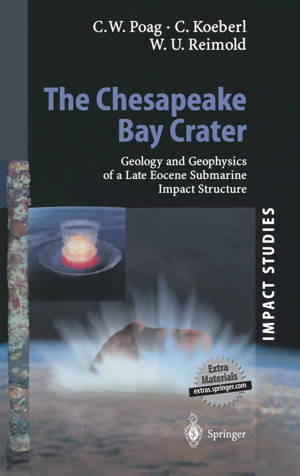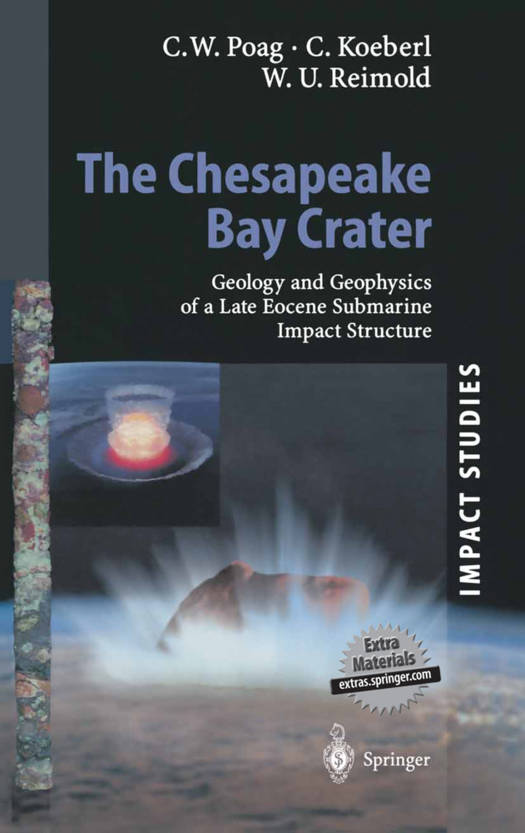
- Afhalen na 1 uur in een winkel met voorraad
- Gratis thuislevering in België vanaf € 30
- Ruim aanbod met 7 miljoen producten
- Afhalen na 1 uur in een winkel met voorraad
- Gratis thuislevering in België vanaf € 30
- Ruim aanbod met 7 miljoen producten
Zoeken
The Chesapeake Bay Crater
Geology and Geophysics of a Late Eocene Submarine Impact Structure
Wylie Poag, Christian Koeberl, Wolf Uwe Reimold
€ 210,95
+ 421 punten
Uitvoering
Omschrijving
" . . . bangs have replaced whimpers and the geological record has become much more exciting than it was thought to be. " Derek Ager (1993) The New Catastro- phism. Cambridge University Press, Cambridge, p xix Scientific and public interest in asteroids, comets, and meteorite impacts has never been more intense than right now. Much of this interest stems from the fervent debates surrounding the causes of the Cretaceous-Tertiary mass extinctions and their possible relationships to a giant bolide impact in Mexico's Yucatan Penin- sula. Recent spectacular impacts on Jupiter, and several near misses of our own planet by Near-Earth Objects have intensified professional and popular discussion of society's imperative need to understand the process and effects of bolide im- pacts. In the United States, the scientific community and the public, as well, were startled to learn, in 1994, that the largest impact structure in this country had been detected beneath Virginia's portion of the Chesapeake Bay. Seismic surveys and deep coring revealed a huge crater, 85 kilometers in diameter and more than a kilometer deep, stretching from Yorktown, Virginia, to 15 kilometers out onto the shallow continental shelf. Several of Virginia's major population centers, includ- ing Norfolk, Hampton, and Newport News, are located on the western rim of the crater, and still experience residual effects of the original collision, 36 million years after the impact took place. Exploration and documentation of the Chesapeake Bay impact structure has proceeded in three phases.
Specificaties
Betrokkenen
- Auteur(s):
- Uitgeverij:
Inhoud
- Aantal bladzijden:
- 523
- Taal:
- Engels
- Reeks:
Eigenschappen
- Productcode (EAN):
- 9783642623479
- Verschijningsdatum:
- 3/10/2013
- Uitvoering:
- Paperback
- Formaat:
- Trade paperback (VS)
- Afmetingen:
- 156 mm x 234 mm
- Gewicht:
- 752 g

Alleen bij Standaard Boekhandel
+ 421 punten op je klantenkaart van Standaard Boekhandel
Beoordelingen
We publiceren alleen reviews die voldoen aan de voorwaarden voor reviews. Bekijk onze voorwaarden voor reviews.











